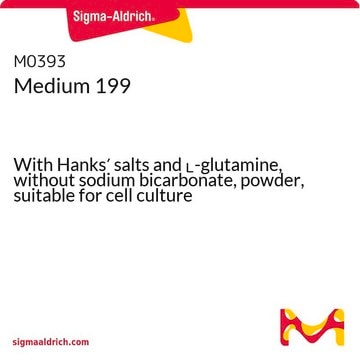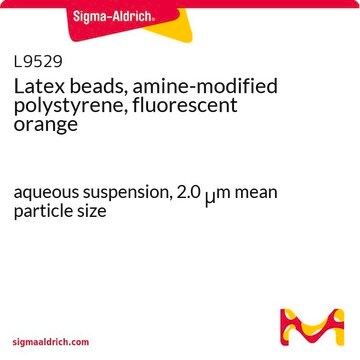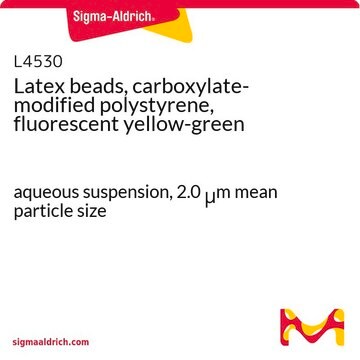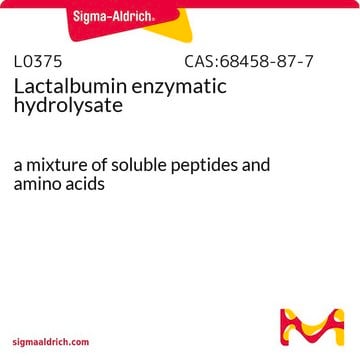M5017
Medium 199
With Earle′s salts and ʟ-glutamine, without sodium bicarbonate, powder, suitable for cell culture
Sinónimos:
Cell Culture Medium, M199 Medium, Medium 199 Solution, TCM 199
About This Item
Productos recomendados
Nombre del producto
Medium 199, With Earle′s salts and L-glutamine, without sodium bicarbonate, powder, suitable for cell culture
Formulario
powder
técnicas
cell culture | mammalian: suitable
componentes
L-glutamine: yes
phenol red: yes
NaHCO3: no
sodium pyruvate: no
Earle’s salts (5% CO2): yes
HEPES: no
Condiciones de envío
ambient
temp. de almacenamiento
2-8°C
¿Está buscando productos similares? Visita Guía de comparación de productos
Descripción general
Cantidad
Reconstitución
suplemento
también adquirido normalmente con este producto
Código de clase de almacenamiento
13 - Non Combustible Solids
Clase de riesgo para el agua (WGK)
WGK 2
Punto de inflamabilidad (°F)
Not applicable
Punto de inflamabilidad (°C)
Not applicable
Elija entre una de las versiones más recientes:
Certificados de análisis (COA)
¿No ve la versión correcta?
Si necesita una versión concreta, puede buscar un certificado específico por el número de lote.
¿Ya tiene este producto?
Encuentre la documentación para los productos que ha comprado recientemente en la Biblioteca de documentos.
Los clientes también vieron
Artículos
Medium 199 supports non-transformed cell cultivation in virology and vaccine production, offering broad species applicability.
Medium 199 supports non-transformed cell cultivation in virology and vaccine production, offering broad species applicability.
Medium 199 supports non-transformed cell cultivation in virology and vaccine production, offering broad species applicability.
Medium 199 supports non-transformed cell cultivation in virology and vaccine production, offering broad species applicability.
Protocolos
Powdered media and salt mixtures are extremely hygroscopic and should be protected from atmospheric moisture.
Contenido relacionado
Discover the formulation for Medium 199 for cell culture applications, including vaccine development.
Discover the formulation for Medium 199 for cell culture applications, including vaccine development.
Discover the formulation for Medium 199 for cell culture applications, including vaccine development.
Discover the formulation for Medium 199 for cell culture applications, including vaccine development.
Nuestro equipo de científicos tiene experiencia en todas las áreas de investigación: Ciencias de la vida, Ciencia de los materiales, Síntesis química, Cromatografía, Analítica y muchas otras.
Póngase en contacto con el Servicio técnico







